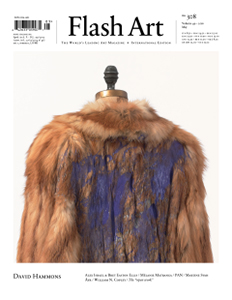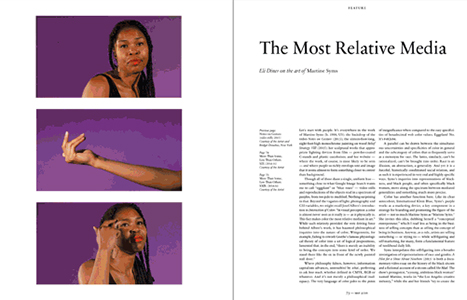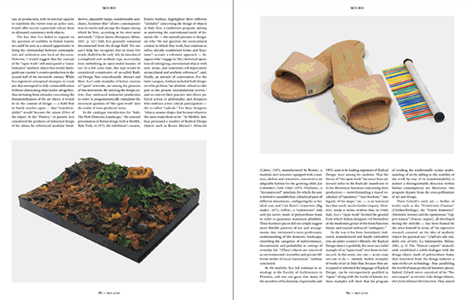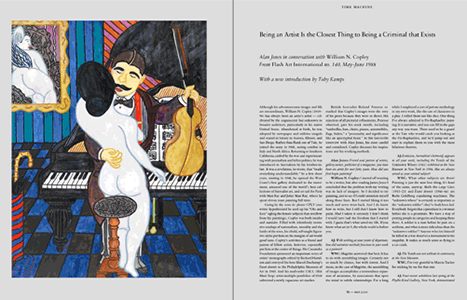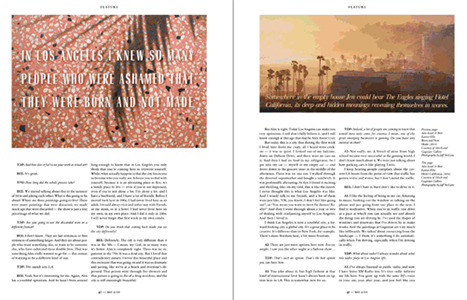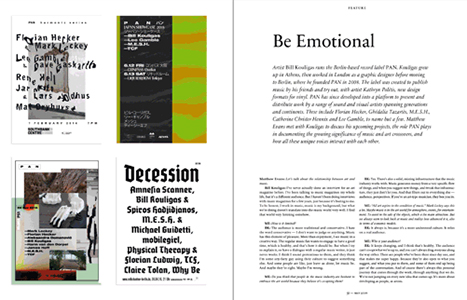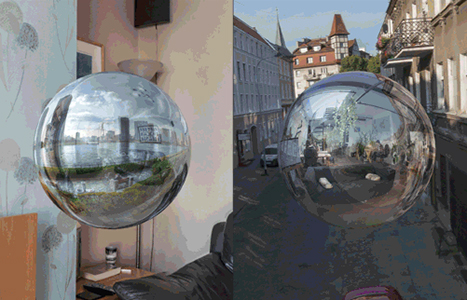Umberto Eco's open work theory, David Hammons, Bret Easton Ellis and
Alex Israel's collaborative text paintings, individuality and community in
Mélanie Matranga's environmental art, Bill Kouligas's Berlin-based record label PAN, åyr art collective,
Martine Syms's inquiries into representations of blackness, a late-in-life interview with William N. Copley, reviews…
Following the death of Italian novelist, semiologist and philosopher Umberto Eco, this issue takes as its point of departure questions posed by Eco's eponymous theory of the “open work”. Eco's collection of essays
Opera Aperta [The Open Work] was published in 1962, when chance operations and indeterminacy became constitutive elements of the creative process. In today's cultural climate, Eco's thinking on “openness” remains relevant to art practice and criticism, providing “an urgent, irksome protest against the organization and management of all which lives,” as British artist
Cally Spooner writes in this issue's “Macro” essay.
The newly introduced “Micro” essay, placed at the end of the issue, responds to “Macro” from the perspective of Italian art, earnestly bringing into the conversation the creative panorama from which this magazine was born. Here, Michele D'Aurizio finds echoes of Eco's theory of the “open work” in the phenomenon of Italian Radical Design. Envisioning “objects that assume shapes that become whatever the users want them to be,” Radical Design is probably the most successful but understudied embodiment of “openness” ever born on Italian soil.
The question of “openness”—and its valences—resonates throughout the entire issue, above all in our cover story devoted to American artist David Hammons. Conceived as a series of “open” questions, posed by a Wattis Institute research group under the guidance of Anthony Huberman, this feature riffs on an uncommonly raw, spiritual and politically charged art practice. Like a jazz musician, Hammons reinterprets art-making procedures in ways that result in unexpected, free-form resonances. But, as Huberman reminds us to ask: “What's the relationship between improvisation and control? Isn't it similar to that of a needle and thread?”
Flash Art is a contemporary art and culture magazine founded in 1967. Within a decade, it became an indispensable point of reference for artists, critics, collectors, galleries, and institutions. In 2020, Flash Art became a quarterly publication, at the same time increasing its trim size and updating its graphic identity. The magazine offers a fresh perspective on the visual arts, covering a range of transdisciplinary approaches and fostering in-depth analyses of artist practices and new cultural directions. Today, Flash Art remains required reading for all who navigate the international art scene.
Flash Art is known for it covers featuring artists who subsequently become leading figures in the art world. The magazine includes photoshoots, productions, critical essays, monographic profiles, conversations with emerging and established artists, and a range of ongoing and thematic columns that change every few years. The long history of the magazine is also highlighted by pivotal texts from the archive that are included in the publication time to time. Finally, every issue offers a highly curated selection of the best institutional exhibitions on the global scene.

